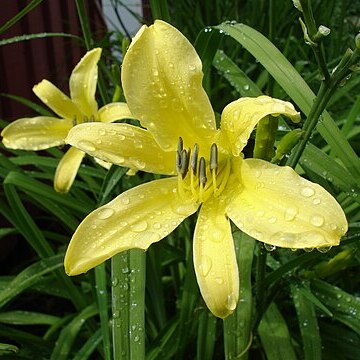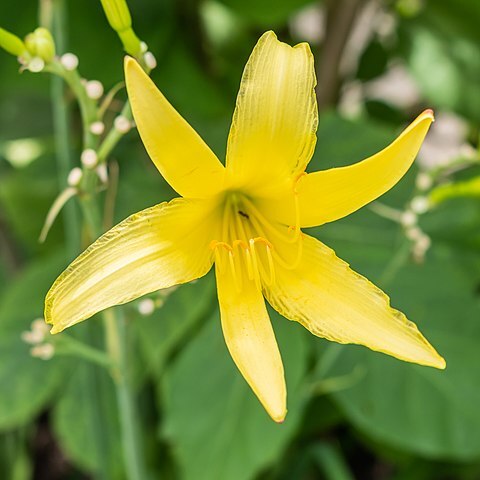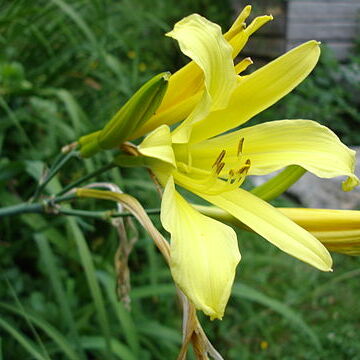A herb. It grows 1-1.5 m tall. It spreads 0.9-2 m wide. It loses its leaves in winter. The roots are rather stout and fleshy. They often have an oblong swollen tuber at the tip. The leaves are narrow and 50-130 cm long by 0.5-2.5 cm wide. The leaf sheath has red edges. The flowering stalk is branched. There are 3-5 groups of 2-5 flowers. They are purplish black in bud and lemon coloured when open. They are large and open in the afternoon and last about 1 day. They have a scent. The fruit is a capsule about 2-2.5 cm long and 1.2-1.5 cm wide.



